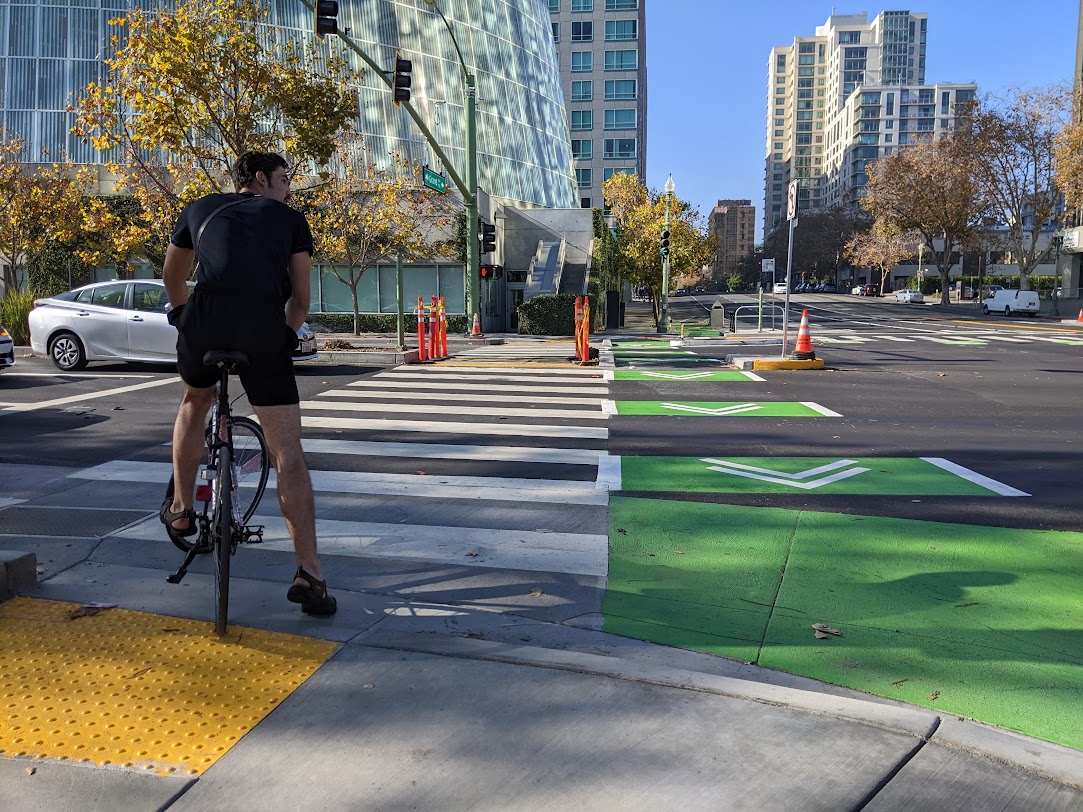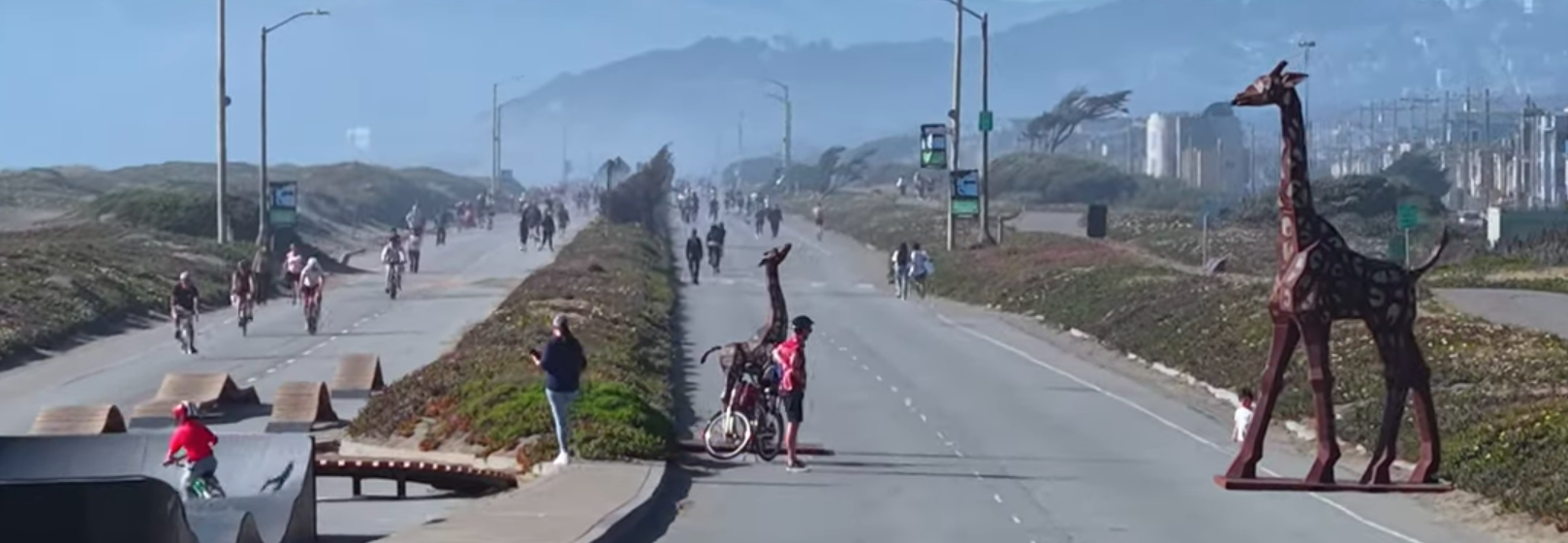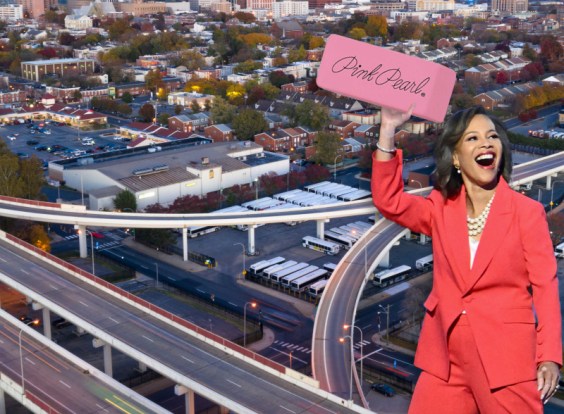Ten years ago, San Francisco set out to make Polk Street safer for everyone, whether walking, biking, using transit, or driving. But despite years of planning and construction, Polk remains part of the city’s High Injury Network, and its unprotected bike lanes don't work. It’s time to revisit what was built.
Polk is one of the best streets in San Francisco for nightlife, cookies, doughnuts, and city life in general. Thanks to the topography of the city’s hills, Polk also happens to be a rare and vital north-south corridor with a gentle grade. That makes it a natural candidate for safe, all-ages bike infrastructure, exactly the kind of investment the city claims to prioritize under its Vision Zero and climate goals.
First, some history
In 2012, the city began planning upgraded bike lanes for Polk. The initial proposals from SFMTA in 2013 included protected bike lanes in both directions for most of Polk, along with concrete boarding islands, daylighting, and extended pedestrian bulb-outs.
But, after sustained merchant opposition, the final design eliminated nearly all of the protected bike lanes and many other safety features. Several blocks, particularly in the commercial core near Pine, were left without any bike lanes at all. Even the few southbound segments with protection used only soft-hit posts rather than curbs or raised tracks (see lead image).
In February 2015, SFMTA cut a block of proposed protected bike lane at Pine Street after merchant backlash, including from the late Mayor Ed Lee’s optometrist. Emails obtained by Streetsblog revealed how lobbying influenced the rollback. The mayor publicly defended what he called a “balanced approach,” insisting he was simply ensuring proper oversight. In reality, the city was left with a heavily watered-down hodgepodge of a plan and a dysfunctional street.
Since then, there have been only two notable improvements to Polk. The block in front of City Hall received parking protection just before the 2024 election. And a single southbound segment near the Department of Public Health got upgraded after a fatal crash in 2021.
A new opportunity to fix Polk
Polk's remaining, sub-par bike lanes, bus stops, and crosswalks are routinely obstructed. Drivers, particularly delivery drivers, face a confusing, non-standard roadway. This isn’t what a modern, urban corridor should look like.
But we now have new mayor and a new district supervisor, Danny Sauter. Mayor Daniel Lurie has promised a data-driven approach to transportation and public safety. Polk Street provides a great opportunity to demonstrate this.
This does not require a full redesign of Polk Street, but rather going back to the original 2013 plan for protected bike lanes and an upgraded street. The city could start with targeted, low-disruption installations on the blocks that are clearly not working—segments with persistent double parking or unsafe conflicts between users. After six years of real-world usage, we have 311 data to guide thoughtful and economical upgrades, block by block. The city should consider testing more durable elements, such as hardened, more densely placed bollards, modular curbs, or other proven treatments that could be installed and evaluated without disrupting merchants or transit access.
Double parking—especially in the bike lane and even on sidewalks—is a chronic problem, caused by both private vehicles and commercial deliveries. Locations in front of doughnut shops, grocery stores, and package delivery hubs deserve a re-evaluation of curb designations. Adjusting the balance of white, yellow, and green zones could better match actual use patterns and help prevent safety hazards for bikers, pedestrians, and transit riders alike and better serve the needs of merchants.
Polk Street has all the ingredients for a great corridor—people, businesses, and geography. It’s time the infrastructure is improved for everyone.





